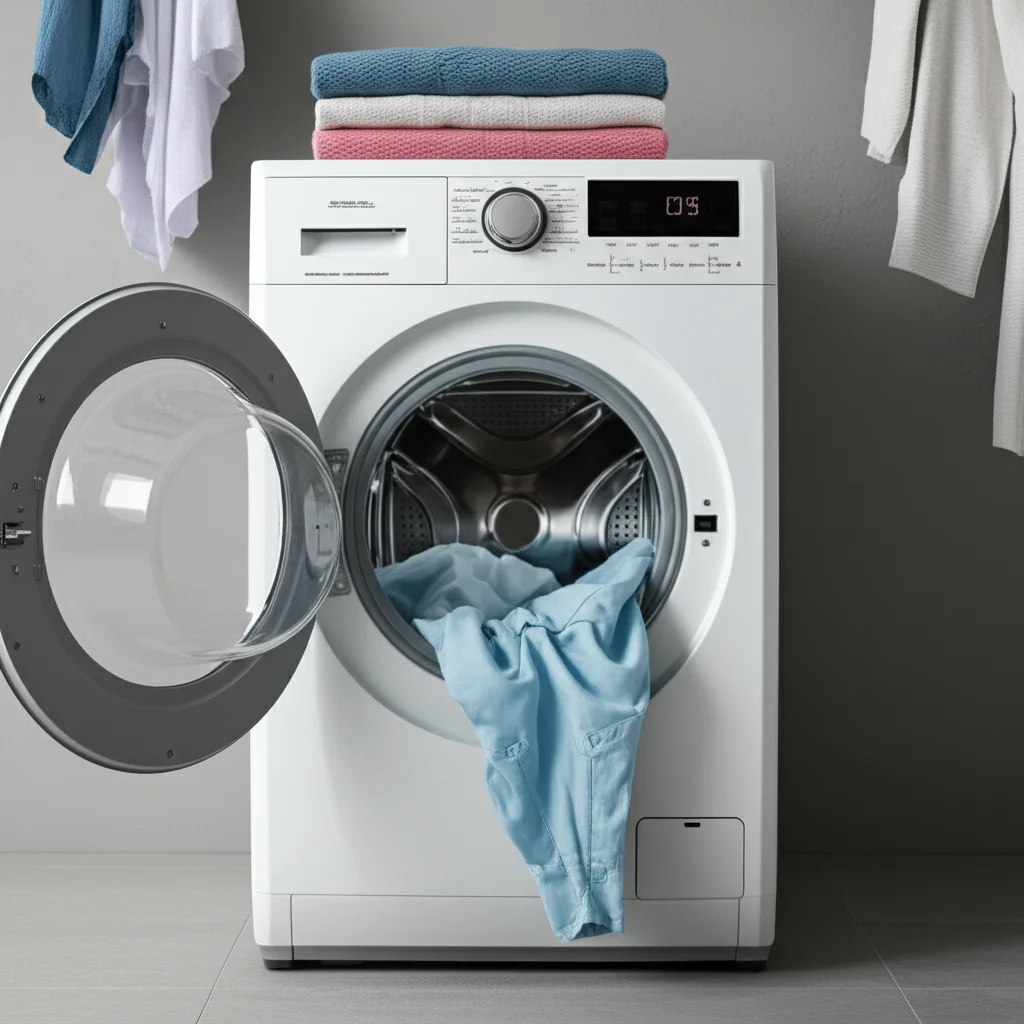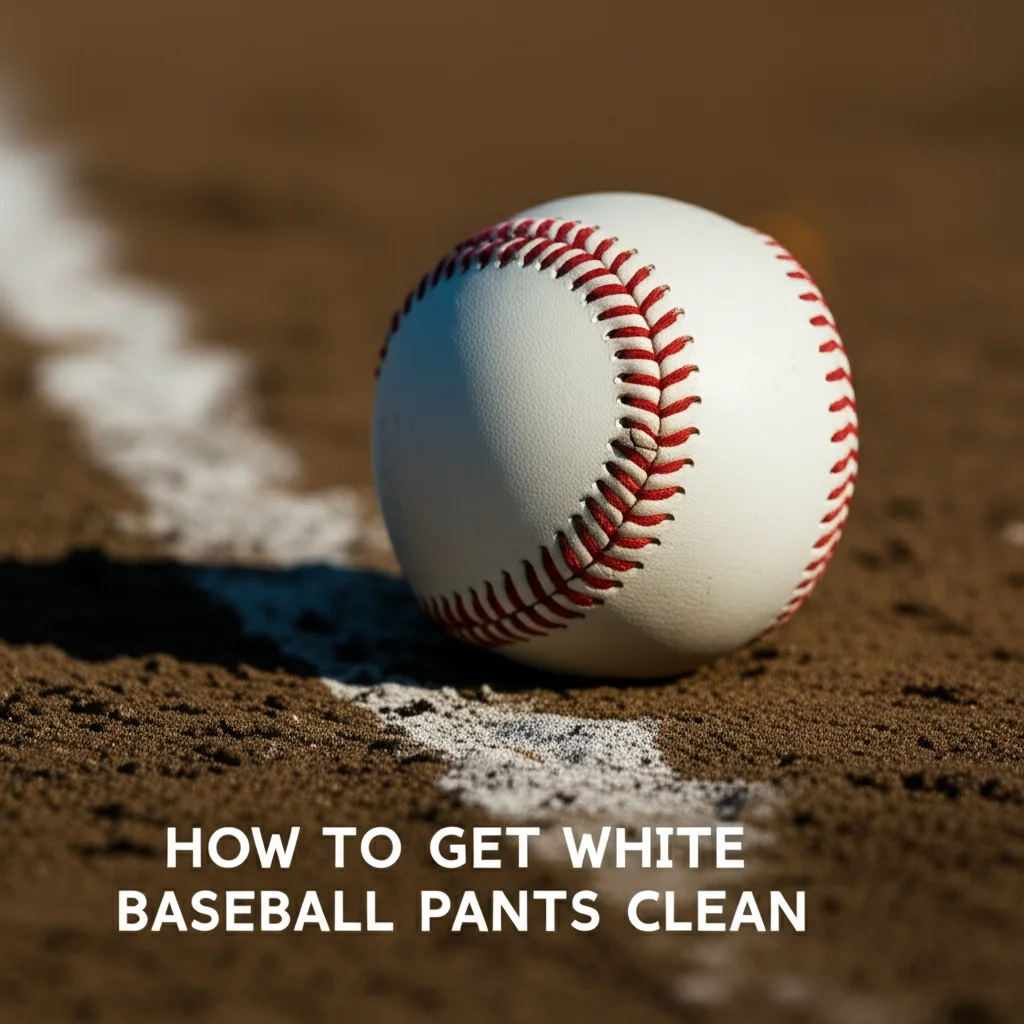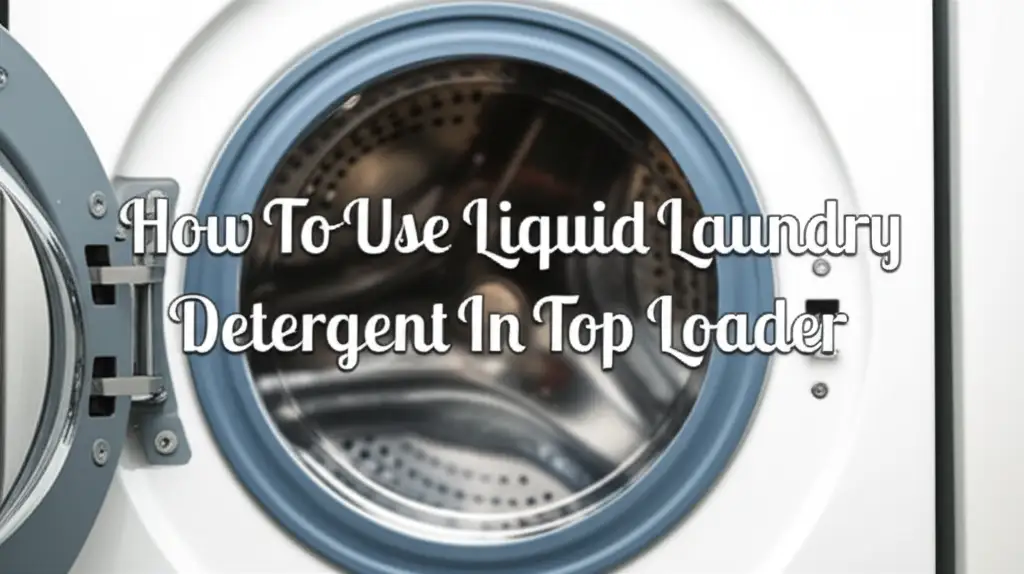· Katria Melrose · Laundry Care · 19 min read
What Is Active Wear In Washing Machine

Washing Activewear: Your Guide to Machine Care
Activewear has become a staple in our wardrobes, whether for intense workouts or comfortable daily living. These garments are special; they work hard to keep us dry and comfortable. But their unique properties mean they need special care when it comes to washing them. You might wonder, “What is active wear in washing machine, and how do I care for it correctly?”
Proper care is key to maintaining activewear’s performance and extending its life. Throwing it in with regular clothes can harm its moisture-wicking abilities and cause odors to cling. This article will explain what activewear is, why it needs specific washing machine care, and provide a comprehensive guide to washing activewear in your machine. We will cover everything from sorting to drying, ensuring your gear stays fresh and effective.
Takeaway
To properly wash activewear in your washing machine, follow these key steps:
- Wash activewear separately from other clothing items.
- Always turn activewear inside out before placing it in the machine.
- Use cold water and a gentle cycle to protect fabric integrity.
- Choose a sports-specific detergent and avoid fabric softener.
- Air dry activewear to prevent heat damage and shrinking.
Activewear in a washing machine refers to clothing designed for physical activity, often made from synthetic, moisture-wicking fabrics like polyester, nylon, and spandex. These materials help manage sweat, but they also require specific washing methods to prevent odor buildup, maintain elasticity, and preserve their performance features, unlike standard cotton garments.
Understanding Activewear Fabrics
Activewear is not just any clothing. It uses specific materials designed for performance. These fabrics are different from typical cotton or denim. Understanding these differences helps you wash them correctly.
Most activewear uses synthetic fibers. Polyester, nylon, and spandex are common examples. Polyester is durable and resists wrinkles. Nylon is strong and smooth. Spandex, also known as Lycra, provides stretch and flexibility. These materials work together to create garments that move with your body.
The main feature of activewear fabrics is their moisture-wicking ability. This means they pull sweat away from your skin. The fabric then allows the sweat to evaporate quickly. This keeps you dry and comfortable during exercise. Cotton, by contrast, absorbs sweat and stays wet. This makes cotton activewear heavy and uncomfortable.
Another key aspect is breathability. Many activewear items have special weaves or mesh panels. These designs allow air to flow through the fabric. This helps regulate body temperature during workouts. Good airflow also helps the fabric dry faster after washing. These properties are crucial for keeping you comfortable.
Synthetic fabrics are also known for their durability. They can withstand repeated washing and wear. However, improper washing can damage them. High heat can break down the fibers. Harsh detergents can clog the pores of the fabric. This reduces their wicking ability over time. Proper care ensures your activewear performs well for longer.
Many activewear pieces also have anti-odor properties. Some fabrics are treated with antimicrobial agents. These agents help prevent bacteria growth. Bacteria cause the unpleasant smells associated with sweat. While these treatments are effective, they are not permanent. They can also be washed away with harsh chemicals.
Why Activewear Smells and How to Prevent It
Have you ever noticed that your activewear still smells even after washing it? This is a common problem. Activewear often traps odors more easily than other clothes. Understanding why helps you fix the issue.
The main reason for persistent odors is bacteria. When you sweat, bacteria on your skin multiply. These bacteria break down sweat, creating smelly compounds. Activewear fabrics, especially synthetic ones, can hold onto these bacteria. The tight weave of many performance fabrics provides a perfect home for them. This creates a challenging cleaning situation for your washing machine.
Traditional detergents might not fully remove these stubborn bacteria. They are good at cleaning dirt and oil. However, they may not penetrate the fabric fibers deeply enough to eliminate all odor-causing microbes. This leaves a lingering smell, often described as a “mildew” or “sour” odor. This happens even after a wash cycle.
Preventing odors starts before the wash. Do not leave sweaty activewear in a pile. The dark, damp conditions help bacteria grow. Hang your gear to dry immediately after wearing it. This helps air out the fabric and reduces bacterial growth. You can also rinse it in cool water if you cannot wash it right away.
When washing, choose the right detergent. Some detergents are specifically made for activewear. These often contain enzymes or other agents that break down tough odors and bacteria. Avoid using too much detergent, as it can leave residue. This residue can trap more bacteria and lead to even worse smells. A smelly washing machine can also contribute to the problem, so ensuring your machine is clean is important.
Cold water is best for activewear. Hot water can set stains and odors. It can also damage the synthetic fibers over time. A cold wash helps preserve the fabric’s integrity. Combine cold water with a good sports detergent for the best results. This method targets the source of the odor without harming your gear.
Preparing Your Activewear for Washing
Proper preparation is crucial for activewear care. It makes a big difference in how clean your clothes get. It also helps extend their life. Taking a few minutes before the wash can save your activewear.
First, always sort your laundry. Separate activewear from cotton items like towels or jeans. Cotton fibers can shed lint. This lint can stick to activewear fabrics. It can clog the pores of the synthetic material. This reduces its moisture-wicking effectiveness. So, keep activewear in its own load.
Next, turn activewear inside out. This protects the outer surface of the garment. It also helps clean the inner surface, which is closest to your skin. The inside holds the most sweat, oils, and bacteria. Turning clothes inside out ensures that the detergent reaches these areas directly. This helps eliminate odors effectively.
Check pockets for any items. Small objects like keys or coins can damage your machine. They can also snag or tear delicate fabrics. Zip up all zippers and fasten any hooks or clasps. This prevents them from snagging other items in the wash. It also keeps the zippers from becoming damaged themselves.
Consider pre-treating heavily soiled or smelly items. For strong odors, a pre-soak can help. You can soak activewear in a solution of water and white vinegar. Use a 1:4 ratio of vinegar to water for about 30 minutes. Vinegar helps neutralize odors and break down bacteria. This step is especially helpful for very sweaty gym clothes.
Avoid overloading your washing machine. Clothes need space to move freely. This allows the water and detergent to circulate properly. Overloading means clothes do not get clean enough. It also puts more stress on your washing machine. This can lead to inefficient cleaning and potential machine issues. For optimal machine performance, learn how to clean your washing machine inside regularly.
If your activewear has reflective elements, be extra careful. Turning them inside out protects these elements from friction. This prevents them from peeling or fading over time. Proper preparation ensures your activewear stays functional and looks good.
Choosing the Right Washing Machine Settings
The washing machine settings you choose are vital for activewear. Incorrect settings can damage fabrics. They can also reduce the garment’s performance over time. Selecting the right cycle and temperature is simple.
Always use cold water when washing activewear. Hot water can break down the elastic fibers, like spandex. It can also cause activewear to shrink. Cold water protects these delicate materials. It also helps prevent colors from fading. This keeps your activewear looking newer for longer.
Select a gentle cycle or delicate cycle. Many washing machines have a “Sportswear” or “Activewear” setting. If your machine has this, use it. These cycles are designed to be less harsh on fabrics. They use slower spin speeds and gentler agitation. This protects the integrity of the synthetic fibers.
If your machine does not have a specific activewear setting, choose “Delicate” or “Hand Wash.” These settings mimic the gentleness of hand washing. They minimize stretching and damage to the fabric. Avoid heavy-duty cycles or hot washes. These are too aggressive for activewear materials.
The spin cycle speed also matters. Choose a low spin speed if possible. High spin speeds can stretch and weaken elastic fibers. A lower speed will leave more water in the clothes. However, this is better for the fabric’s lifespan. You can always air dry your activewear to complete the drying process.
Using a mesh laundry bag is another smart move. Place smaller items like sports bras, socks, or delicate tops in a mesh bag. This prevents them from getting tangled. It also protects them from snagging on zippers or other clothing. Mesh bags add an extra layer of protection during the wash cycle.
Check your garment’s care label. While these are general guidelines, the label provides specific instructions. Manufacturers know their fabrics best. Following their recommendations ensures the longest life for your activewear. Always prioritize the care label when in doubt about settings.
Detergents and Additives for Activewear
Choosing the right detergent is as important as the wash cycle. Regular detergents might not be ideal for activewear. Some laundry additives can even harm the fabric. Understanding these differences helps keep your activewear in top shape.
Consider using a sports-specific detergent. These detergents are formulated for synthetic fabrics. They are designed to break down sweat, body oils, and stubborn odors. Many regular detergents leave residue on activewear. This residue can trap bacteria and reduce the fabric’s wicking ability. Sports detergents rinse cleanly from the fabric.
Avoid fabric softener at all costs. Fabric softener is very bad for activewear. It coats the fibers of the fabric. This coating clogs the microscopic pores. These pores are essential for moisture-wicking. Once clogged, the fabric can no longer pull sweat away from your skin effectively. It also traps odors. Fabric softener can be difficult to remove once it builds up.
Do not use bleach on activewear. Bleach is a harsh chemical. It can damage the synthetic fibers in activewear. It also breaks down the elasticity of spandex. Bleach can ruin the color and integrity of your garments. If you need to sanitize, use a sports-specific laundry booster or a small amount of white vinegar.
For persistent odors, white vinegar is a good option. You can add half a cup of white vinegar to the fabric softener dispenser. Vinegar helps neutralize odors naturally. It also removes residue left by detergents. This helps restore the fabric’s wicking power. Vinegar is a gentle and effective deodorizer.
Baking soda can also help with odors. Add half a cup of baking soda directly to the washing machine drum. Baking soda absorbs odors. It also helps brighten clothes. You can use it along with your regular activewear detergent. Both vinegar and baking soda are safe for synthetic fabrics.
Always measure your detergent carefully. Using too much detergent can lead to residue buildup. It also wastes product. Using too little means your clothes do not get clean. Follow the instructions on your detergent bottle. For guidance on where to put different products, you can refer to articles like What Goes Where In A Washing Machine.
Drying Activewear Safely
Drying activewear correctly is just as important as washing it. High heat can cause significant damage. It can ruin the fabric’s performance and lifespan. Air drying is almost always the best option.
The best way to dry activewear is to air dry it. Hang your activewear on a clothesline or drying rack. Make sure to hang items individually. This allows air to circulate around them. Air drying prevents shrinkage and maintains fabric elasticity. It also helps prevent heat damage to delicate synthetic fibers.
If you must use a dryer, choose the lowest heat setting. Many dryers have an “Air Fluff” or “No Heat” setting. This is the safest option. High heat melts or damages synthetic materials. It can also cause elastic bands to lose their stretch. This ruins the fit and function of your activewear.
Avoid dryer sheets. Just like fabric softener, dryer sheets can leave a waxy coating. This coating clogs the pores of activewear fabrics. It reduces their moisture-wicking ability. Dryer sheets can also trap odors within the fabric. Skip them completely when drying activewear.
Tumble drying on low heat should be brief. Remove items while they are still slightly damp. Then, hang them to finish drying naturally. This minimizes heat exposure. It helps prevent damage and preserves the fabric’s properties. Do not over-dry activewear.
Some activewear garments have special features. Reflective details, bonded seams, or silicone grips need extra care. High heat can cause these elements to peel or degrade. Air drying protects these features. Always refer to the care label for specific drying instructions.
Proper drying also prevents the growth of mildew. Ensure activewear is completely dry before storing it. Storing damp clothes can lead to mildew. This creates unpleasant odors and can damage the fabric. A well-ventilated space helps clothes dry thoroughly.
Common Mistakes to Avoid When Washing Activewear
Washing activewear can seem simple, but common mistakes shorten its life. Avoiding these errors keeps your gear performing its best. Learning these pitfalls helps you master activewear care.
One major mistake is using hot water. Hot water damages synthetic fibers. It breaks down the elasticity in spandex. This causes activewear to lose its shape and stretch. Always use cold water for washing activewear. Cold water preserves the fabric’s integrity and color.
Another common error is using fabric softener. Fabric softener clogs the pores of activewear. These pores are crucial for moisture-wicking. Once clogged, the fabric cannot pull sweat away. This also traps odors within the material. Skip fabric softener completely for activewear.
Overloading the washing machine is also a mistake. Clothes need room to move freely. This allows proper water and detergent circulation. Overloading prevents thorough cleaning. It also puts strain on your machine. Wash activewear in smaller loads to ensure cleanliness.
Using too much detergent can be harmful. Excess detergent leaves residue on fabrics. This residue can trap bacteria and odors. It also makes your activewear feel stiff. Follow the detergent’s instructions for the correct amount. Less is often more for activewear.
Not separating activewear from other laundry is a common oversight. Lint from cotton towels or fuzzy garments can stick to activewear. This lint can clog the fabric’s pores. Always wash activewear in a separate load. This prevents lint transfer and maintains performance.
Ignoring care labels is another frequent mistake. Manufacturers provide specific washing instructions for a reason. These labels ensure the best care for your garment. Always check the tag before washing new activewear. It gives the most accurate guidance.
Putting activewear in a hot dryer is a common error. High heat can shrink items. It also degrades elastic fibers and damages special features. Air drying is always preferred. If using a dryer, use the lowest heat setting or air fluff.
Leaving sweaty activewear in a laundry basket is detrimental. This creates a breeding ground for odor-causing bacteria. Hang activewear to dry immediately after wearing. This helps prevent odors from setting in.
Maintaining Your Washing Machine for Activewear
Washing activewear properly also means keeping your washing machine clean. Activewear fabrics often release residue. This residue can build up inside your machine. A dirty machine can transfer odors back to your clothes. Regular cleaning ensures your machine performs optimally.
Activewear can leave behind sweat, body oils, and detergent residue. These substances accumulate in the drum and various parts of the washer. Over time, this buildup creates a film. This film can harbor bacteria and mold. It can then cause your activewear, and other laundry, to smell bad.
Clean your washing machine regularly. For a front-loader, pay attention to the rubber gasket. This area often traps moisture and residue. Wipe it down after each wash. For a thorough clean, use a damp cloth with a vinegar solution. You can learn how to clean the rubber gasket in a washing machine for detailed steps.
Run a self-clean cycle monthly. Many modern washing machines have this feature. This cycle uses hot water and strong agitation. It helps remove buildup from the drum and internal components. If your machine lacks this, run an empty hot water cycle with two cups of white vinegar or a cup of baking soda. This helps sanitize the machine.
Check and clean the detergent and fabric softener dispensers. Residue can accumulate here. This can prevent proper dispensing of laundry products. It can also harbor mold. Remove and rinse these compartments regularly. A simple scrub with warm, soapy water often works. For specifics, see how to clean the softener dispenser in a washing machine.
Don’t forget the washing machine filter. Over time, lint, hair, and small debris can clog the filter. A clogged filter impacts drainage and cleaning efficiency. Refer to your machine’s manual for filter location. Clean it every few months. For general guidance, check out how to clean a washing machine filter.
After each wash, leave the washing machine door ajar. This allows air to circulate inside. It helps the drum dry out. This prevents mold and mildew from growing in the damp environment. It is a simple step that makes a big difference.
A clean machine ensures your activewear comes out truly clean and fresh. It also extends the life of your appliance. Regular maintenance is key to effective laundry care.
Longevity and Sustainability of Activewear Care
Proper activewear care goes beyond just cleanliness. It also impacts the longevity of your garments. Taking good care of your activewear contributes to sustainability. Extending the life of your clothes means less waste.
High-quality activewear can be an investment. By following proper washing and drying methods, you protect this investment. Incorrect care can cause premature wear and tear. Fabrics can lose their stretch or wicking ability. Colors can fade, and seams can break down. Careful washing keeps your activewear looking and feeling new for longer.
When clothes last longer, you buy new items less often. This reduces your consumption. It also lessens the demand for new production. The textile industry has a significant environmental impact. Less frequent purchases mean fewer resources used for manufacturing. It also means less clothing ending up in landfills.
Synthetic fabrics like polyester and nylon are made from petroleum. This makes their production resource-intensive. While durable, their disposal can also be problematic. By maximizing their lifespan, you reduce your environmental footprint. This is a simple way to practice sustainability in your daily life.
Proper care also maintains performance features. The moisture-wicking and quick-drying properties of activewear are crucial. When these properties are compromised, the clothes become less effective. You might feel uncomfortable during workouts. This could lead you to replace items sooner. Effective care ensures activewear continues to perform as designed.
Consider the energy consumption of your laundry habits. Washing activewear in cold water saves energy. The heating of water consumes a large portion of laundry-related energy. Air drying also saves energy by avoiding the use of a dryer. These small changes add up over time.
By embracing mindful laundry practices, you support both your wallet and the planet. It is about making smart choices that benefit everyone. Caring for your activewear is a small but impactful step in sustainable living. This holistic approach makes sense for modern active individuals.
FAQ Section
Can I put all types of activewear in the washing machine?
Most activewear is machine washable, but always check the care label first. Delicate items like sports bras with complex padding or very thin fabrics may benefit from a mesh laundry bag. Items with extreme embellishments or specific care needs might require hand washing. Generally, standard synthetic activewear is safe for machine washing with proper settings.
How often should I wash my activewear?
You should wash activewear after every wear. Sweat, body oils, and bacteria accumulate quickly on these fabrics. Leaving them unwashed allows odors to set in and bacteria to multiply. Regular washing removes these contaminants, keeping your activewear fresh and extending its lifespan.
What should I do if my activewear still smells after washing?
If your activewear still smells, try a pre-soak in white vinegar and water (1:4 ratio) for 30 minutes before washing. You can also add half a cup of white vinegar or baking soda to the wash cycle. Ensure you are not using fabric softener, which traps odors. Also, make sure your washing machine itself is clean.
Can I use regular laundry detergent on activewear?
It is best to use a sports-specific detergent. Regular detergents may not fully remove all odors or residue from synthetic fabrics. They can also leave a film that reduces activewear’s wicking ability. If you must use regular detergent, choose one that is free of dyes and perfumes, and use less than recommended.
Is it okay to use hot water to kill bacteria on activewear?
No, hot water can damage activewear. It breaks down elastic fibers and can cause shrinking or loss of shape. Cold water is effective for cleaning activewear when combined with the right detergent. For sanitization, use laundry boosters designed for cold water, or add vinegar to the wash cycle instead of relying on high heat.
Why should I avoid putting activewear in the dryer?
High heat from the dryer can melt or damage synthetic fibers. It can cause activewear to shrink, lose its elasticity, and degrade its moisture-wicking properties. Air drying is the safest and most effective method. If you must use a dryer, select the lowest heat or air-fluff setting to minimize damage.
Conclusion
Understanding what activewear is in a washing machine and how to care for it correctly is key to keeping your favorite gear in top condition. These specialized garments, made from moisture-wicking synthetic fabrics, require a gentle approach. By following simple steps—like using cold water, a gentle cycle, and avoiding fabric softener—you can extend the life and performance of your activewear significantly. Proper washing helps eliminate stubborn odors and maintains the integrity of the fabric.
Remember, the goal is to protect the unique properties that make activewear so effective. Regular cleaning of your washing machine also contributes to fresher laundry and a healthier appliance. By adopting these mindful laundry habits, you not only preserve your activewear but also contribute to a more sustainable lifestyle. Embrace these tips and give your activewear the care it deserves; your clothes and your workouts will thank you for it.





